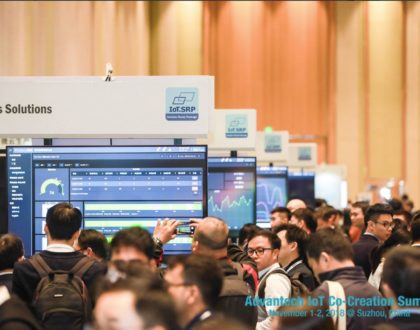The IT/OT Mashup
by Mike Fahrion
 Somewhere around 50 A.D. Heron of Alexandria invented a working steam engine. If industry had taken an interest, the Industrial Revolution might have gotten started a heck of a lot sooner. Astronauts could have been playing golf on the Moon when Attila the Hun was still in diapers.
Somewhere around 50 A.D. Heron of Alexandria invented a working steam engine. If industry had taken an interest, the Industrial Revolution might have gotten started a heck of a lot sooner. Astronauts could have been playing golf on the Moon when Attila the Hun was still in diapers.
But industry has traditionally been very careful about adopting anything newfangled. Sometimes it’s because industry tends to have huge investments in equipment that is designed for long lifespans. Sometimes they’re just playing it safe. If the old tech still works, why take chances?
Consider Ethernet, for example. By the time industry even started looking at Ethernet our PCs had already been connected for a decade. Humans were downloading music, browsing web sites, buying things on Amazon and selling them on Ebay. But most machines were still muddling along with data protocols from the late 20th century. It wasn’t that connectivity tools like serial-to-Ethernet converters were unavailable. Industry and Operations Technology just took their sweet time adopting them.
Industry used to be dubious about wireless technology, too. Wireless got off to a bit of a rocky start in the conservative OT world, where there’s nothing funny about “Can you hear me now?”
But times change, and technologies evolve. At this point, a number of different wireless technologies have matured and their costs have dropped dramatically. There are no longer many situations where some form of wireless can’t deliver reliable industrial connectivity at a very reasonable price. And I’ve noticed that while OT may have been slow to adopt new tech in the past, they are embracing wireless much more quickly than they adopted Ethernet. Wireless dramatically reduces, and sometimes even eliminates, the labor costs associated with pulling wire in industrial applications. That makes it very attractive, even if OT tends to be hesitant about exploring new options.
Industry could be doing a lot more with modern tech. Wireless should be a key ingredient in modern M2M and industrial IoT, just as it is in the consumer world. Look at our ubiquitous smart phones, with their 24x7x365 data connectivity. We’ve redefined our personal expectations of what “connectivity” means. We can get alerts on things like weather, traffic, train delays and ski conditions, and we can have them customized any way we like. We can have the data delivered to us around the clock, virtually anywhere we happen to be. We can kill time in an airport by streaming a movie from Netflix. We can tuck ourselves into bed at night by downloading a bestseller for the Kindle. Humans expect to be fully connected, everywhere we go, all of the time.
So why shouldn’t machines have the same connectivity? Why in the world should I have to send a truck out to a worksite to see if things are running properly? Why should I have to walk around with a clipboard to collect readouts from sensors or meters? With today’s tech, industrial equipment can be just as connected as the human beings who install it, whether it’s a motor in a quarry, a delivery truck out on the road, or a bin full of corn on an Iowa farm.
Fortunately, OT is beginning to wake up to the possibilities. In fact, IT and OT are starting to merge. They used to be two very different departments, with differing operating rules and differing agendas. They were even supplied by different sets of vendors. That is changing. Vendors who traditionally played only in the world of IT are now stepping into the world of OT, through partnerships, acquisitions and other creative means. Vendors who formerly focused on OT are doing the same.
Here at B+B we’ve been connecting IT and OT all along. So it’s no surprise that we’re forging partnerships with some very interesting players and being presented with some very interesting opportunities. Many of the biggest names in the IT industry are beginning to engage in the world of Operations, and they’re discovering that they need help when they reach past the IT closet and out to the messy Network Edge. We’re happy to help.
This mash up of IT and OT is inevitable, and there will be winners and losers. Some companies are going to struggle with it. Some will figure it out early, and they’ll earn the competitive advantages that will make them the new leaders in their fields. If you or your company have any questions about merging IT and OT, I’d love to hear from you.
And as for Alan Shepard’s Apollo 14 lunar golf shot, it’s estimated that it may have travelled more than two miles. I’m guessing that drive may still be the record.
-Mike
Recommended Posts

Co-Creation, Paving the Way to a More Connected Future
November 27, 2018

The Benefits of a ‘Do It For Me’ Mentality in the IIoT
October 5, 2018

Why You Need to ‘Mind the Gap’ in Manufacturing Technology
August 31, 2018
